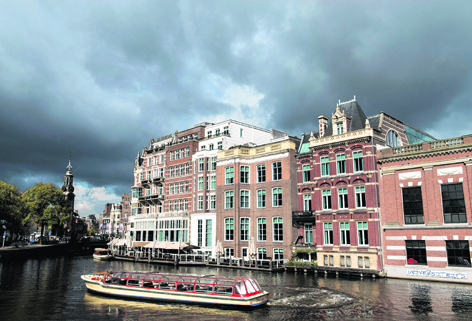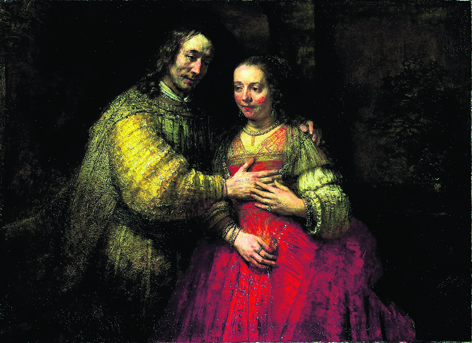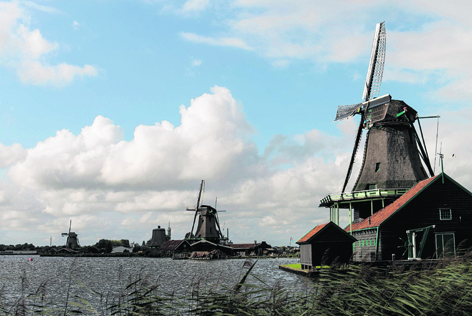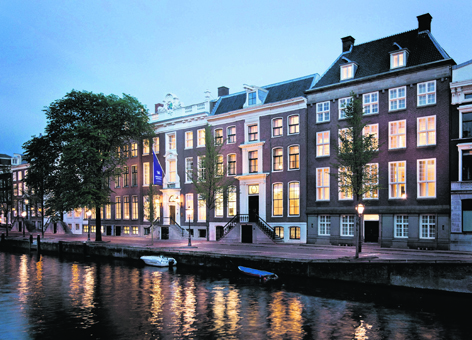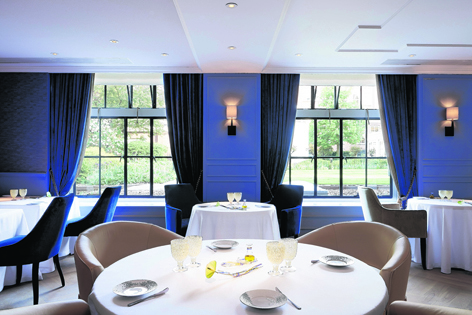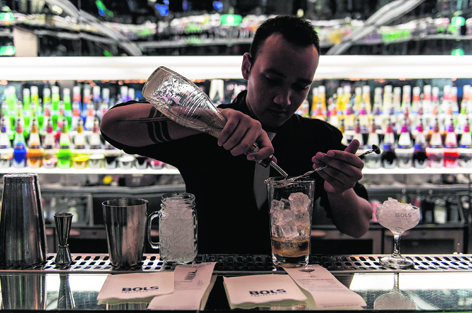On October 15, London’s National Gallery opens a blockbuster Rembrandt exhibition, The Late Works. We visit Amsterdam, where the 17th century artist lived and worked.
As he gazes tenderly at the young woman, one arm resting on her shoulder, she clasps his other hand to her chest, appearing to reciprocate his affection.
The Jewish Bride, which now belongs to the Rijksmuseum in Amsterdam, may be overshadowed by Rembrandt’s better known The Night Watch, but when Vincent Van Gogh first saw the painting in 1885, he proclaimed that he would gladly give up ten years of his life to sit in front of it for a fortnight with only a crust of dry bread to eat.
The masterpiece, painted in 1665, will be exhibited in London for three months as part of a blockbuster exhibition at the National Gallery, examining the Dutch Master’s turbulent but creative later years.
Forty paintings (along with drawings and prints) will be on display, created from the 1650s until the artist’s death in 1669, aged 63, many characterised by a looser style and displaying great sensitivity and emotion for the time.
But along with celebrating Rembrandt’s greatness as an artist, the collection also casts a spotlight on the society and culture of a city that helped shape the Dutch Golden Age.
Following on from last year’s ceremonious reopening of the Rijksmuseum after a 10-year renovation, Amsterdam consolidates its position as one of the most important artistic hubs in Europe, reclaiming some of the glory enjoyed in the 17th century.
Taking a boat tour along the criss-crossing canals allows me the opportunity to study the towering town houses that crowd the street like a wonky set of incisors.
Decorated with elaborate coats of arms, many belonged to wealthy merchants and constituted prime real estate. So for Rembrandt to purchase his property on the corner of Jodenbreestraat for 13,000 guilders in 1639, he was clearly enjoying success.
In reality, the artist went bankrupt in 1656 and moved to a more modest property in Rozengracht. But an inventory of his belongings was used to reconstruct the house which now operates as The Rembrandt House Museum, home to the biggest collection of Rembrandt etchings.
The Salon is filled with historical paintings by Pieter Lastman, Hercules Segers and Jan Lievens. Distinctive by its emotive expression, locking gaze with the viewer, one work (number 63) stands out from the rest; the Portrait of Eleazar Swalmius, on temporary loan from the Royal Museum of Fine Arts in Antwerp, is the only painting by Rembrandt in the house.
Upstairs is a ramshackle collection of dusty curios; exotic shells, brain coral, feather headdress, armadillo shell and lion skin were once prized possessions of the artist.
A number of animal derivatives, such as cactus flies from Mexico, were also used to create some of the 14 pigments used by Rembrandt throughout his lifetime.
Artist Eric Armitage demonstrates the paint-making techniques, using a heavy porphyry stone (a type of volcanic rock) to grind powdery dyes, which are then mixed with flaxseed oil and stored in pigs’ bladders.
The most expensive colour of the time was lapis lazuli from Afghanistan, used to create the famous Dutch blue championed by Johannes Vermeer; even today it costs 25,000 euros per kilo.
But Rembrandt was very shrewd, Eric tells me, and would use the much cheaper cobalt pigment smalt as an economical substitute. He would tell his customers that they would get the blue they wanted, so he wasn’t deviating too far from the truth.
One of the artist’s greatest concerns, though, was that his paintings would look good even after 400 years, and so he would employ tricks such as applying a pine tree resin varnish to finished works, to collect dust and dirt, which could then be removed with turpentine.
His foresight clearly paid off, and whereas many of Van Gogh’s paintings have faded, works by Rembrandt still impress with bold colours.
In the 17th century, many artists would purchase ground pigments from the windmills in the countryside outside Amsterdam. At one time, there were 1,000 mills in operation, used to make paper, wood, oil and many other products, but now, only a handful remain as part of a historical reconstruction at Zaanse Schans, a 40-minute bus ride from the city, on the banks of the Zaan river.
I hear the mills before I see them; heavy sails tug at creaking boards, paddling through the air like a fleet of fully-rigged barques on the high seas.
Having resumed production ten years ago, De Kat claims to be the world’s only remaining wind-powered dye mill selling antique paints. Parts of this particular mill date back to 1720, and watching cogs turning and heavy stones grinding is a reminder of the work, time and effort that went into producing a piece of art.
Many of those finished works would hang on the walls of Amsterdam’s grand canal houses, such as the six 17th and 18th century properties, which have been renovated to create the new 93 room Waldorf Astoria Amsterdam hotel on Herengracht. One of the original townhouse owners, Josephus Brentano, was even known to be a collector of Rembrandt.
Amounting to much more than luxury accommodation, the property offers a glimpse into the past with a lavish entrance hall, dominated by a Louis XIV-style wooden staircase.
The excellent Librije’s Zusje restaurant, created in partnership with the team behind three Michelin-starred De Librije, is decorated in accents of ochre and lapis lazuli, and as I sit down to a tasting menu of mind-blowing creations, I imagine I might be joined by Vermeer’s Girl With A Pearl Earring.
For the most part, Rembrandt was fortunate enough to make a decent living from his work, but by challenging conventions with his innovative use of light, shade and action, he inevitably ran into problems. Several militiamen depicted in The Night Watch, for example, were unhappy with the work and for many years, he received far fewer commissions.
But his financial difficulties didn’t end there; the troubled artist ran up debts at the Bols distillery owned by his neighbour Lucas Bols, a major shareholder in the Dutch East India Company.
Today, the House of Bols tells the story of genever, a botanic infused, malt wine based spirit, which paved the way for better known gin and has since spawned 36 liqueurs used by bartenders around the world.
I walk past a painting by one of the Rembrandt’s students, used in part to pay his debts, and into a mirrored room with flashing lights and mixologists flaring neon bottles – a sign of how much the brand has developed over the last few centuries.
The bartender fills a tulip-shaped glass with Old Geneva until the viscous liquid forms a lip overhanging the brim; this is exactly how Rembrandt would have enjoyed his tipple.
The vanilla and spice drink is dangerously addictive, and I wonder why more of the artist’s fine works hadn’t ended up in the possession of Lucas Bols.
But it’s a fitting tribute that one of Amsterdam’s busiest nightlife districts, Rembrandtplein, should be named in honour of the city’s most cherished resident.
While sitting outside one of the neon-lit bars, I notice a couple walking arm in arm and my thoughts return to The Jewish Bride. Three hundred and fifty years on, the same emotions are shared – proof that it’s not just the bold colours in Rembrandt’s paintings that have withstood the test of time.
TRAVEL FACTS
Sarah Marshall was a guest of the Waldorf Astoria Amsterdam, who offers rooms from £395 room only. A tasting menu in Librije’s Zusje costs £85, without drinks.
EasyJet flies to Amsterdam from 11 UK airports, with prices starting from £19.99 per person (one-way, including taxes and based on two people on the same booking).
